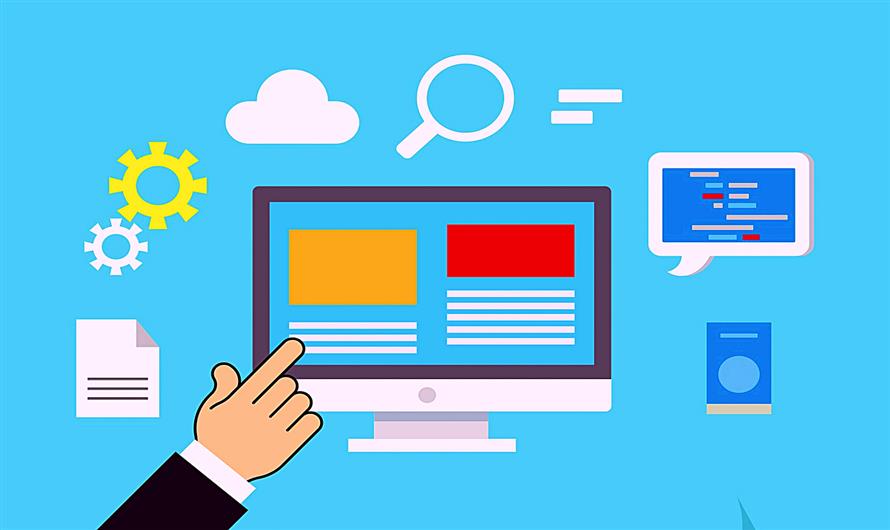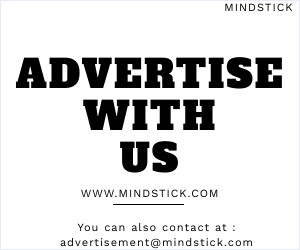A landing page is a medium through which the user engages. This is a gateway which diverts the traffic and with its help the product and service can be promoted and represented.
A landing page is a medium of user experience and user interface. The more user experience the user gets, the more user interface increases. Under user interface, the more the interaction functionality structure of the web page and landing page is comfortable for the user, the more the user engages on the website.
There are two types of main audiences on the learning page, target and non-target audience.
Target audience is that which comes directly to our web page and website. For target audience, we use target ad campaign, target marketing, market strategy. That audience brings potential users and these potential users promote our product and service. Non-target audience is that which only increases the visiting rate of the website but does not increase our conversion rate. It only increases the bouncing rate and the web page and website on which the bouncing rate is increased, it also affects the conversion rate on that web page and website. It also affects our product and service.
Traffic is an important aspect for the ranking, performance ,index and speed of the site. We can understand traffic in two forms,
limited traffic and overflow traffic. If as much traffic as our target audience wants is diverted to our landing page, then we call it limited traffic, which is good for our website or web page. But if more traffic than what we have thought of as the target audience is diverted to our landing page or web page, then it is not good for our web page and website because it affects the security ,performance speed ,function of our website a lot. It increases the loading period of data, user experience decreases and when user experience decreases, user interaction also decreases automatically.
Google Search Console,Hotjar and Heatmap analytics,Hubspot ,Adobe analytics Etc. are important tools with the help of which traffic analytics can be done.
Let us know some steps by which we can increase the ranking, speed, performance etc of our website.
1. Search Rate
When a user searches his query on a
search engine, when the page and website appear on that query, how quickly our page and website appear in the listing in a short searching time is called search rate.
Meta descriptions such as title URL description keywords tags etc. play an important role in improving the search rate of a website.
2. Average Spending Time
When the number of users is compared with an average time, it is called average spending time. The higher the number of users, the more the average spending time will increase. Website outlook and website overview are very important for average spending time. When the content quality given in the website is of high quality and promotes user comfort, user satisfaction and user attraction, average spending time can be increased with this. In this, cross functional collaboration such as the IT team, content writing team, continuous marketing team, promotion and advertisement team have an important role. The more attention is given to cross functional collaboration, the more the user's average spending time on the website will increase.
Every web page of the website and landing page is important. User engagement should be created on every page, user activity should increase. User's comfort and satisfaction should be increased. The more times a user searches for a web page or a website on Google, the more its index value and ranking will increase. With this increase in search rate, there will be a possibility of the website and web page getting displayed quickly in the listings with less searching.
3. Page Metrics
When the number of web pages of a website is compared with the number of users, it is called page metrics. To make a page attractive, techniques like search engine optimization, social media marketing, affiliate linking, back link, influence marketing, keyword planning, meta description, email marketing, internet marketing, mobile marketing etc. can be used. Therefore it is essential that every page should have trending keywords and every page should have unique meta description so that traffic increases. There should be a unique content marketing for every page. Every page should have attractive elements like images, videos, infographics etc.which should also have a user engagement rate. For this we can use heat map analytics so that we can know on which page there is maximum user interaction and on which page there is less user interaction so that by modifying the page we can increase its engagement rate.
4. Click Analytics
Whenever a user comes to the website, he clicks on elements like contact form, information submit, subscribe to email newsletter, detail form, queries form etc. and from this click we can know how many users have visited our website and how many users are interested in taking the product or service of our website. From this we can do click analytics. For this, techniques like
Google Ads, Google Analytics, cost per click, click through rate, pay per click can be used.
5. Engagement Rate
You can take the help of Google Ads to increase your induction and ranking. You can use different types of ads. You can run campaigns to promote your
website. You can increase the engagement rate by using elements like sponsorship marketing, popular guest feature, writing award, competition, reward certificates etc. With the help of social media links, when users engage on your social media, their written subscribers, follow users, comments, feedback etc. will give branding to your product and service. With this click, we are able to analyze the user's engagement rate.
The more users try to connect to our web page and website, the more our engagement rate will increase.
6. Visiting rate
With this engagement rate, users will get updates and notifications. Due to which the user's visiting rate will also increase. That is why the given elements should be very attractive so that users try to engage and show interest in the product and service.
7. Site Usability
Landing page is created for promotion of product and service and to increase its usage. The main objective is to provide product and service to the user. For example, suppose you are a book seller and you also have a book selling store. For this, you have also created a web page and a landing page for which you also do promotion ad campaign and Google ads. When the user clicks to buy his favorite books, he comes to know that it has to be purchased only from your book store. This does not show your side usability.
For site usability, engagement elements like social media link, website link, content marketing, brand awareness marketing, retargeting strategy, target marketing, e-platform marketing, influence marketing etc. techniques can be used for the customer.
8. Conversion Rate
Whenever a user comes to our website, he promotes our traffic. From this traffic, we target the target audience and we also try to capture these potential customers with the help of targeting marketing and remarketing strategy. So that the traffic that comes to our website increases the visiting rate. From their visiting rate, we promote the conversion rate and prevent bounce rate. Google Ad Manager, Google Analytics, Hotjar, HubSpot, VWO, etc. are important tools.
9.Website Analytics
Websites are static and dynamic with a varied range of interactions and different environments. Important tools for website analytics are Matomo, Clicky, Adobe Analytics, SEMrush, Mixpanel etc. Website Analytics is essential. User activities are analyzed and their activities are recorded. Information about traffic source, user analysis, customer behavior etc. is kept. With the help of this, we can increase the growth and speed of the website.
10. Website Environment
A website is mainly determined by its front end and backend. It is developed using a variety of different range of customizations and techniques. Hence, the overview of a website, website outlook, website structure, website architecture contribute significantly to its ranking, indexing, speed and performance. The more heavy coding there is in the web page and website like CSS file, HTML file, JavaScript file, the more time the website will take to run. If there is heavy content in the website like video, images, PDF, info graphics, backlinks, inbound links, outbound links etc., the more time the website will take to load. That is why it is always very important to have customization of data, it is essential to have a balanced loading period of the website.
The website should avoid going into the buffer zone. Buffering is a process in which the website stops the functioning of the website when it is unable to load data and starts loading the data. Data should never be loaded all at once, that is why the concept of lazy loading should be used in the website. Speed can be increased with plugins like liteSpeed server and autoptimize etc.




Leave Comment